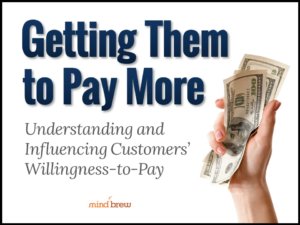Being able to know what’s going to happen before you change prices would be an incredibly powerful insight to have, wouldn’t it? That kind of insight could let you model potential customer reactions to new prices and even understand what will happen to revenue and margin.
Being able to measure price elasticity is what it takes to give you those kind of insights. And while it’s obviously a very powerful concept and tool, it’s just not very broadly utilized by business-to-business companies.
We tasked our research team to better understand what’s holding companies back from taking advantage of this pricing capability. Through their discussions with pricing teams in the trenches, they uncovered 3 key reasons:
- The daily grind and constant firefighting tends to hold pricing teams back from understanding the concept and capabilities of price elasticity. If there’s not an existing initiative in place or a reason to take action because competitors are doing it, it’s difficult to break free from existing projects and start measuring and utilizing price elasticity.
- The traditional methods for measuring elasticity don’t work in a B2B environment. Few companies have good data around the deals that their sales teams quote and the win/loss outcomes. And in B2B, doing things like price testing are often operationally challenging, if not impossible. So, instead of finding a way to measure price elasticity for their business, many just decide it’s a bridge too far.
- Conflicting messages from pricing experts on B2B price elasticity give people pause. Some say that it doesn’t exist. Others say that it’s just different. But we know price elasticity exists in B2B–we all see it every day. Different prices will result in different volumes and different customers will have different price responses. Nevertheless, those conflicting messages can provide an excuse to stick with the status quo.
But the truth is, price elasticity is too powerful of a tool to let these reasons hold you back. Companies are using it to drive better pricing outcomes and you can too. If you’re ready to get going—or if you just want to learn more about how to use price elasticity—check out the training session replay of Business-to-Business Price Elasticity.
Business-to-Business Price Elasticity
All About Price Optimization














